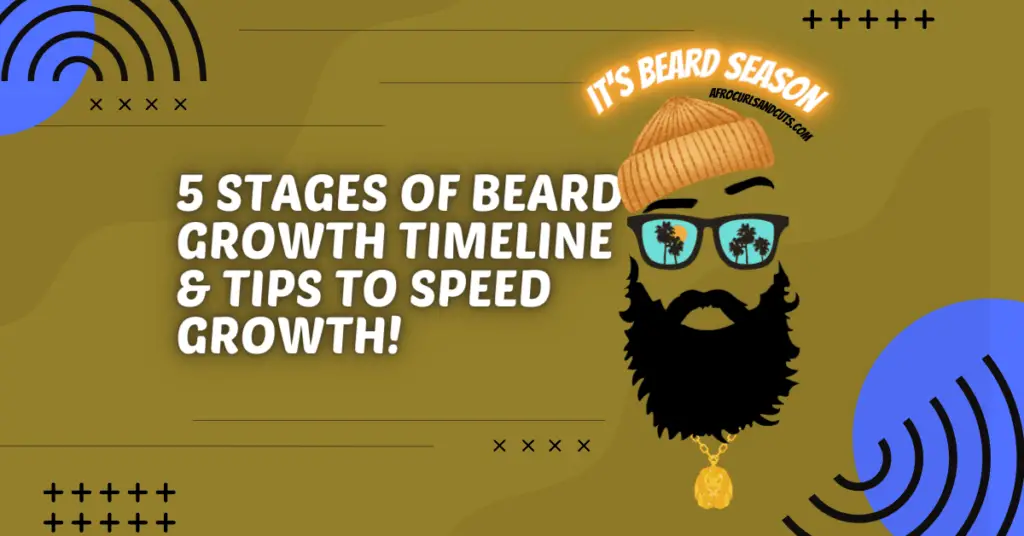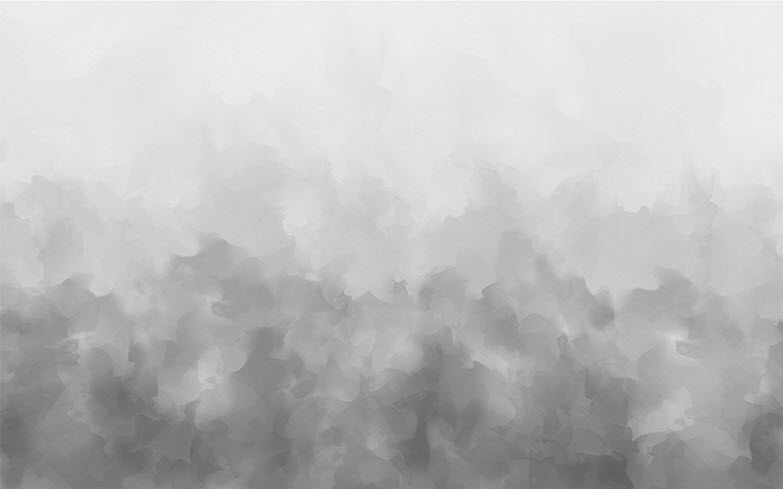We may earn money or products from the companies mentioned in this post.
5 Phase of Beard Growth Timeline & Tips to speed it up!
When you want to grow a beard fast, you need the most accurate information to get you to you there. Luckily, this easy-to-follow Beard Growth Timeline will help you achieve beard greatness in no time!
Click here for Amazon Annual Audible Membership!
Growing a beard can be challenging, especially if you want to do it fast.
Not only is growing a beard a physical challenge, but it can also be a mental one. You might feel like you’re not growing hair fast enough, or your beard is patchy.
We’ve put together the ultimate beard growth timeline to help you grow your beard faster. This timeline will help you stay on track and ensure you’re doing everything possible to achieve the beard of your dreams.
Beard Growth Timeline:
- Stage 1: Stubble (2 to 3 weeks).
- Stage 2: Beard Growth (3 to 6 weeks).
- Stage 3: Beard Filling In (6 to 9 weeks).
- Stage 4: Beard Maintenance (9 to 12 weeks).
- Stage 5: Final Beard Stage (over 12 weeks).
Stage 1: Stubble phase (week 1 to 2).
Facial hair growth can be an exciting time for any man. It’s a time to experiment with different styles and find the look that best suits you.
However, it’s also a time of frustration, as your facial hair goes through several stages of growth before it reaches its full potential.
Remember that during this stage, you may develop ingrown hair, which can be painful. Be sure to use a good Beard Oil to help reduce irritation.
The first stage is stubble, when you may start to see some hair above the lip or along the jawline. This beard growth stage is also known as the 5 o’clock shadow.
Don’t worry if your facial hair isn’t growing evenly at this stage – it takes time for hair follicles to awaken and start producing hair.
Stage 2: Itchy Beard Growth phase (week 3 to 6).
After a month of growing out your beard, you’ll finally start to see some significant progress. At this stage, your hair will be around half an inch in length, and it will start to fill in.
You may also notice new challenges, such as the occasional beard itch or dryness. Fortunately, there are products available to help you deal with these issues.
It is still important to care for the skin underneath your beard to avoid irritation. Be sure to wash your face and beard regularly, and moisturize as needed.
Stage 3: Beard fill-in phase (week 6 to 9).
Welcome to phase three of the beard growth journey! After six weeks, most men will have some of their chins, jaws, and lower cheeks covered with thicker beard hair.
Men with patchier beards may still see bald spots on their upper cheeks, but these should gradually fill in over time.
This is normal in the beard growth cycle, and there’s no need to worry. Note, that phase three is considered the hardest part of the beard growth journey. Many men become tempted to give up and shave their beards when progress stalls.
However, stick it out, and you’ll soon be rewarded with a full and healthy beard! Just remember to keep your beard well-groomed with a beard brush during this stage to ensure it looks its best.
Stage 4: Maintenance during Beard Growth phase (week 9 to 12).
As your beard grows, you’ll need to practice proper beard care. Around week nine, you’ll notice the hairs are curlier or dryer than usual, and you may even notice split ends.
This is natural, and it’s nothing to worry about. Just be sure to brush your beard regularly with a boar bristle brush, and use Beard oil or Beard balm to keep your hair healthy and hydrated.
You should also continue to wash your beard regularly, using a beard shampoo or Beard soap. Of course, at this stage, you’ll need to start using a beard conditioner to keep your hair soft as well.
The last thing you want is to end up with a beard that smells or looks bad!
Stage 5: Final Beard Growth phase (12 weeks and over).
Now you can end your long-anticipated final stage of achieving the desired beard length! In the fifth stage of your beard growth, your beard will be at its longest, and you’ll have finally achieved the beard of your dreams.
Of course, this doesn’t mean that your journey is over; you’ll still need to continue maintaining your beard to keep it looking good.
You can also take the opportunity to experiment with different styles and find the look that best suits you. Keep in mind that you can always trim your beard if it starts to get too wild.
In the last beard stage, your will barely see your facial skin, and you will have a full luscious beard! By continuing your beard grooming, you’ll be the envy of all your friends.
The best method of dealing with beard itch!
You’ll come across many methods and products that claim to stop beard irritations, but the reality is there’s no one-size-fits-all solution. Instead, you’ll need to find what works best for you when researching beard growth tips. Everyone’s beard is different, so it’s important to experiment to find what works best for your facial hair.
However, here are a couple of ways to reduce itchiness that are worth trying:
How do I treat my itchy beard?
An itchy beard can be a real pain-Literally. Not only is it an annoyance, but it can also lead to beard dandruff, which is no fun. The good news is that you can do a few simple things to soothe your itch and keep your beard looking its best.
First, make sure you’re bathing or showering regularly. Even if you don’t typically bathe every day, washing your beard with warm water will help remove any dirt and bacteria that could be causing the itch.
Second, invest in a good face or beard wash. There are plenty of products on the market specifically designed to hydrate and nourish facial hair.
Third, use a beard conditioner with jojoba or argan oil to keep your beard hair’s natural oils intact and help prevent the itch in the first place. Following these easy beard tips, you can say goodbye to facial itchiness for good.
Helpful facial hair growth Frequently asked questions.
One of the ways we’ve found to be effective in guiding so many men through their beard growth stages is by answering their most frequently asked questions.
How long does it take to grow a beard?
The hair follicles go through a growth cycle during your beard growth process. Facial hair goes through three main stages of growth: anagen, catagen, and telogen.
The anagen phase is the growth phase, during which thicker beards follicles can grow up to 0.3-0.5 mm per day. This phase can last quite some time; typically, the longer the anagen phase lasts, the longer your beard will be.
The catagen phase is the transitional phase, during which beard follicles begin to shrink and prepare for the telogen (resting) phase. This phase usually lasts around 2-3 weeks.
Finally, the telogen phase is the resting phase, during which beard follicles remain inactive for around three months. After this period, the beard hair growth cycle begins again… Meaning old hair falls out, and new hair grows in.
Is beard hair different than head hair?
Most guys think that full beard growth is like the hair on their head – but it’s quite different! Beard hair is much thicker and coarser than head hair, making it more difficult to tame.
The good news is that beard hair responds very well to proper grooming. Just be sure to use the right beard growth products; Beard oils and Beard balms are specifically designed to nourish, eliminate dryness and condition your facial hair.
Another difference between scalp hair and beard hairs is how often you can wash them. Beard hair is much more resilient than head hair, so you can wash it every day if you want to.
In fact, a good beard wash will remove dead skin cells and help the skin beneath stay healthy. Proper maintenance is key to keeping a full beard looking and feeling its best.
What age does beard growth peak?
Many men believe that having a thick beard is essential to their manhood. Beards generally begin growing during puberty, although this can vary from person to person.
While genetics plays a role in how thick and full your beard will be, there are other factors at play as well.
Testosterone, the male sex hormone, is responsible for helping men reach their physical maturity.
The male hormone can also help facial hair grow faster as the body increase testosterone production. This is why most men will achieve their fullest beard growth by age 25-35.
However, you may still experience patchy beard growth even in the peak beard growth stage. Bald spots in beards can result from low testosterone levels or poor blood supply, which may result in a longer beard growth timeline.
Though it is uncommon, poor circulation can cause beard hair loss resulting in patchy facial hair growth. If you suspect this might be the case for you, we recommend talking to your doctor.
Are there alternative options to deal with slow beard growth?
There are some other ways you can also combat this decline, including a healthy diet, exercise, and supplementation.
By taking care of your body and maintaining healthy testosterone levels, you can keep your beard looking its best for years to come.
Last thought, beard growth timeline.
The beard growth timeline is a process that takes patience and a bit of trial and error. Depending on the person, it can take anywhere from a few weeks to a few months to grow a full, healthy beard.
The first growth stage is typically the itchiest, as the hair follicles adjust to the new growth. In the second stage, the beard begins to fill in and take shape.
Finally, in the third stage, the beard reaches its full potential. Beard care is an important part of the growth process, and paying attention to both diet and hygiene can help promote healthy growth. Anyone can grow a thick, lustrous beard with little time and effort.
If you liked it, please share our beard tips on how to grow facial hair in the shortest time with your friends.



